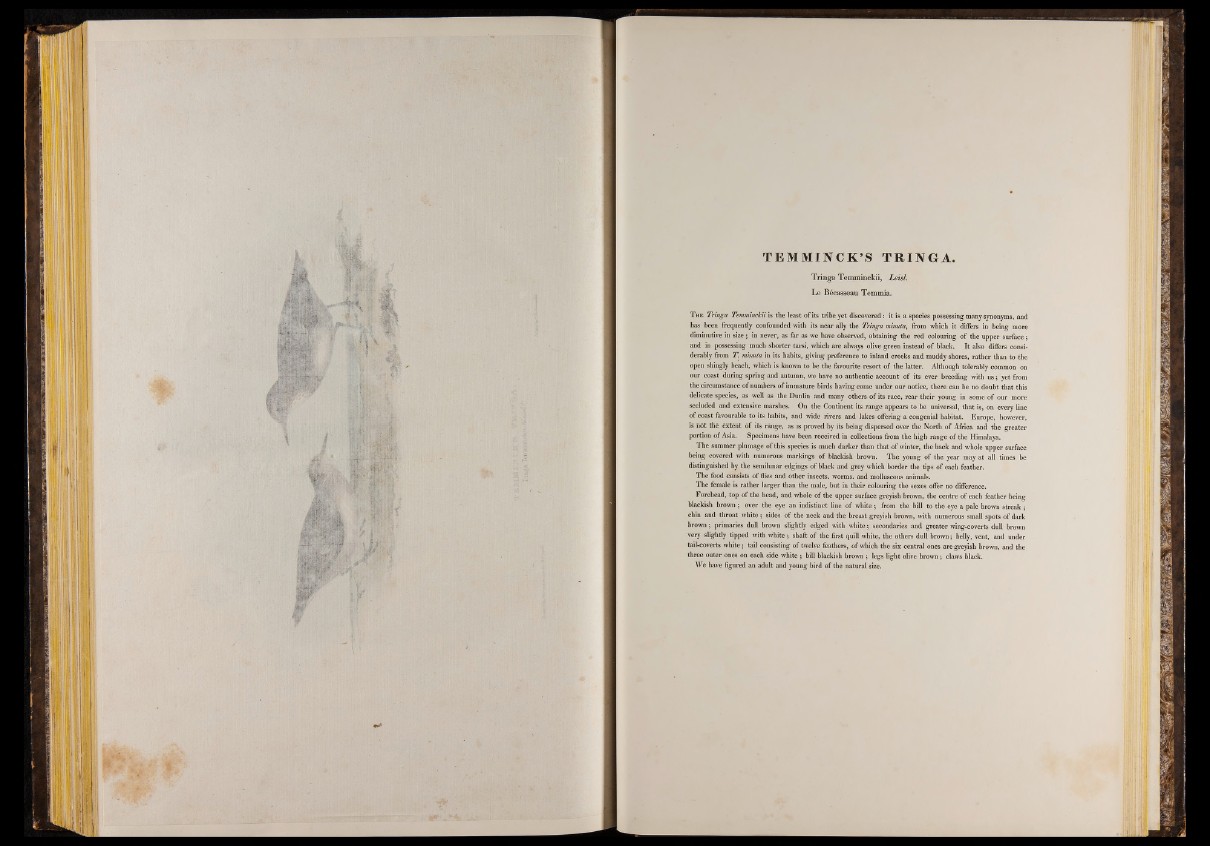
w t lÉl l i l i
H l
■
li l i 11
SU
ü
TEMMINCK’S TRINGA.
T r in g a T emmin ck ii, L e is l.
L e Bécasseau Temmia.
T h e Tringa Temminckii is the least o f its tribe yet discovered: it is a species possessing many synonyms, and
has been frequently confounded with its near ally the Tringa minuta, from which it differs in being more
diminutive in size; in never, as far as we have observed, obtaining the red colouring o f the upper surface;
and in possessing much shorter tarsi, which are always olive green instead o f black. It also differs considerably
from T . minuta in its habits, giving preference to inland creeks and muddy shores, rather than to the
open shingly beach, which is known to be the favourite resort o f the latter. Although tolerably common on
our coast during spring and autumn, we have no authentic account o f its ever breeding with u s; vet from
the circumstance o f numbers o f immature birds having come under our notice, there can be no doubt that this
delicate species, as well as the Dunlin and many others o f its race, rear their young in some o f our more
secluded and extensive marshes. On the Continent its range appears to be universal, that is, on every line
o f coast favourable to its habits, and wide rivers and lakes offering a congenial habitat. Europe, however,
is not the extent o f its range, as is proved by its being dispersed over the North o f Africa and the greater
portion o f Asia. Specimens have been received in collections from the high range o f the Himalaya.
The summer plumage o f this species is much darker than that o f winter, the back and whole upper surface
being covered with numerous markings o f blackish brown. The young o f the year may at all times be
distinguished by the semilunar edgings o f black and grey which border the tips o f each feather.
The food consists o f flies and other insects, worms, and molluscous animals.
The female is rather larger than the male, but in their colouring the sexes offer no difference.
Forehead, top o f the head, and whole o f the upper surface greyish brown, the centre o f each feather being
blackish brown ; over the eye an indistinct line o f white; from the bill to the eye a pale brown streak ;
chin and throat white; sides o f the neck and the breast greyish brown, with numerous small spots o f dark
brown ; primaries dull brown slightly edged with white; secondaries and greater wing-coverts dull brown
very slightly tipped with white ; shaft o f the first quill white, the others dull brown; belly, vent, and under
tail-coverts white; tail consisting of twelve feathers, o f which the six central ones are greyish brown, and the
three outer ones on each side white; bill blackish brown ; legs light olive brown; claws black.
We have figured an adult and young bird o f the natural size.